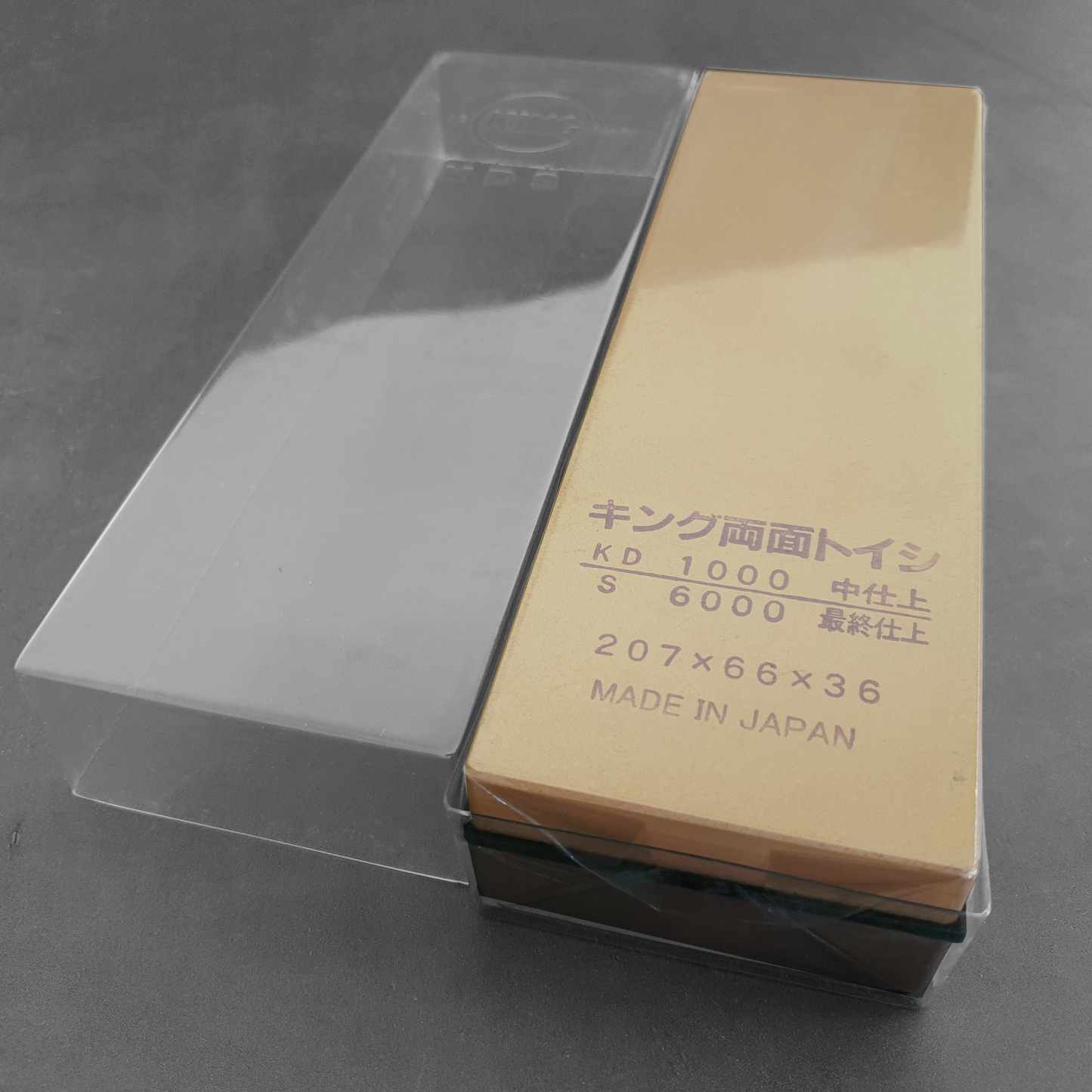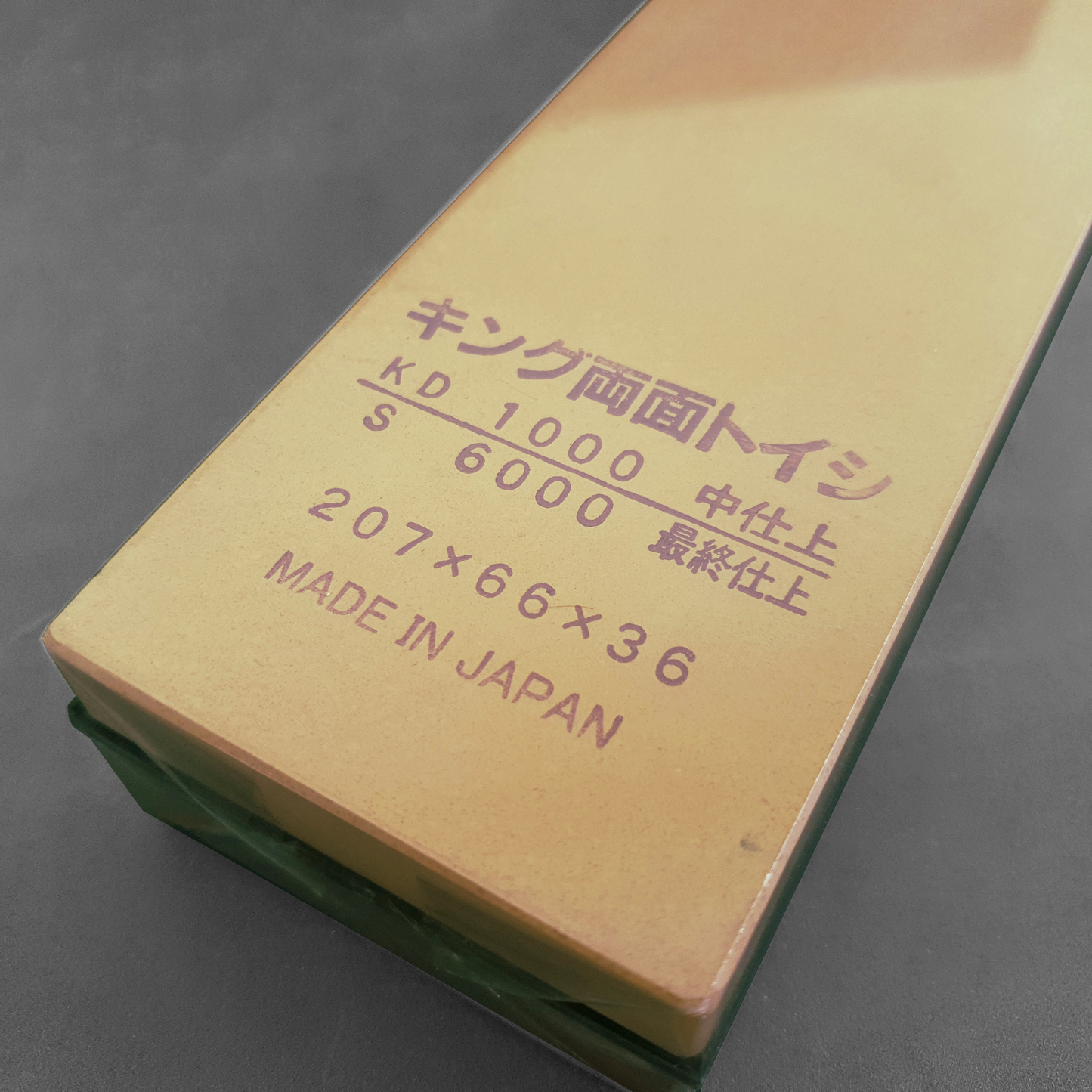King KDS 1000/6000
King KDS 1000/6000
Couldn't load pickup availability
This Whetstone is:
- Soaking - Soak for at least 8 minutes before use
- Medium Cutting - Slows down some with harder, high-alloy steels
- Medium Wearing - This stone dishes at a moderate rate, luckily the stone is quite wide and thick
- Low priced - Usually a 6000 grit stone costs about as much as the KDS costs
To many, this is the value for money champion. If you're looking a #1000 and #6000 whetstone to add into your lineup, this is probably the best choice out there.
While the #1000 side may not be the highest quality, it does provide an excellent tactile feedback and is quite forgiving for inexperienced sharpeners who may not have a good grasp of getting the correct sharpening angle.
The #6000 side is pleasant to use and gives a bright, almost mirrored polish to the edge.
How to use:
- Soak the stone in water for about 8 minutes.
- Splash stone with water whenever it feels dry.
- Start with the 1000 grit side first (dark brown).
- Begin sharpening your knife in sections, do not stay in 1 section for too long.
- Check each section and ensure a consistent burr has developed before switching sides.
- Repeat the same process on the other side.
- Deburr your knife by using an edge trailing stoke on the whetstone (stropping).
- Check for any burr remaining and deburr section by section until you have a sharp edge.
- Repeat with the 6000 grit side (light yellow)
- Done!
Results to Expect:
After using the 6000 grit side, your edge will achieve an almost mirror-like polish, it will be quite shiny. The edge should easily push cut paper, if your sharpening angle is below 15 degrees, you may be able to cut a freestanding piece of paper in half. This edge is usable for 100% of kitchen tasks.
Troubleshooting:
If your edge is sharp in some areas but not in others, check that you have deburred consistently throughout the edge. Also, make sure you have a consistent sharpening angle throughout the length of the blade.
You may have microchips on the edge if your edge cannot achieve sharpness at specific points on the edge. You may use a 400 grit stone to remove these microchips.
Dimensions: 207 x 66 x 36mm
Weight: 957g






